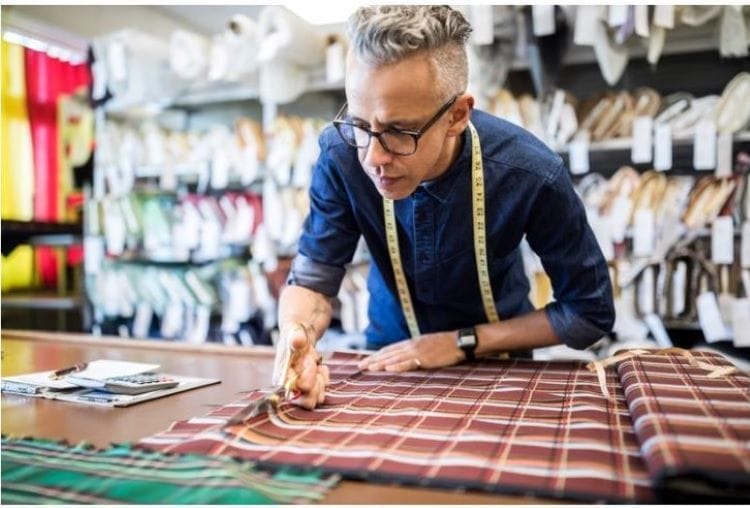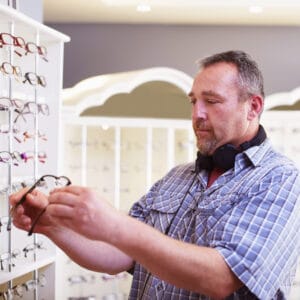August 28, 2023
The technology behind the design and manufacturing of PALs (progressive addition lenses) has improved immensely during the past several years. I can still remember my first bifocal patient in the Pacific University College of Optometry clinic where my basic choice was a Kryptok bifocal. The color aberration from these lenses was significant, and image jump was an ongoing problem. In order to best prescribe for a patient today, optometrist’s need a strong understanding of the latest freeform technology. Major lens manufacturers employ well-educated designers with a wide knowledge of physics and mathematics. Hoya’s iD MyStyle 2 is an example of this newest technology.
Progressive lenses have had an amazing step forward since my first Kryptok, however, as manufacturers continue to innovate in their lens designs, we have more to learn, and there are more ways to refine lens designs. In the beginning, patients had a hard time adjusting to progressive lenses, but with newer technologies most adapt well to modern lens designs.
By 2030, the last baby boomer will reach the retirement age of 651 and the first millennials are reaching age 40, which means presbyopia is already setting in or will be soon. There are more presbyopes needing progressive lenses than ever before, and they are going to need well-informed ECPs to step up to the plate and prescribe for them.
Binocular Harmonization Technology
Hoya utilizes a process in designing its lenses known as Binocular Harmonization Technology. This technique balances presbyopia with progressive lenses. Currently 7 in 10 European presbyopes have different prescriptions between their left and right eyes.2 This can often lead to a frustrating amount of eyestrain symptoms, especially when performing near work. The smallest amount of binocular disparity means that light passing through each lens will be refracted differently. This means that the prismatic effect of each lens will be different. The result of this optical phenomenon is that it is possible for a vertical imbalance, and thusly, the awareness of asthenopic complaints such as unstable vision, tired and burning eyes and headaches. We know from personal experience that different patients respond to these different amounts of binocular disparity differently. Each patient is unique, and each visual system has its own limits of disparity that it can tolerate comfortably. The result of this potential disparity is that patients need their brains to work harder to even out the images processed by each eye.
Binocular Harmonization Technology is the latest ophthalmic lens technology that takes into account this binocular disparity. By adjusting the progressive corridor lengths, power distribution, and lens thickness, maximum binocularity is achieved at near vision. This technology uses five new measurements in the Binocular Eye Model:
- Binocular Clearness Index: Measures how clearly the lens wearer sees an image through their spectacle lens.
- Convergence Difference Between R/L: This measurement shows whether the two lens combinations force the wearer to apply either convergence or divergence as a function of the object distance, the power, the power difference, and the prismatic difference (due to the power difference).
- Accommodation Demand Difference Between R/L: Represents the amount of accommodation an eye requires to view an object at any distance.
- Magnification Difference Between R/L: Represents the difference in spectacle lens magnification for the right and left eye.
- Vertical Prismatic Difference Between R/L: This is the different prismatic effects of the pair of lenses in the vertical meridian.
By taking into account the difference between the two eye prescriptions and the five types of measurements above, Hoya can adjust each lens to equalize image size and image position. This process creates harmony between the two eyes and stable binocular vision at near. The patient’s eyes no longer have to self-correct, reducing their eye strain symptoms.
The Ideal Outdoor Lens
Hoya’s iD MyStyle 2 progressive addition lens incorporates Binocular Harmonization Technology. This lens is Hoya’s most popular convenience option with the design being balanced as described above, and it works for many different tasks, both indoor and outdoor, and provides clarity at all distances. The design has a strong emphasis on the distance viewing area — with near perfect edge-to-edge clarity. Hoya promotes the lens as an excellent option for outdoor enthusiasts, mail carriers, truck drivers, pilots — anyone who spends a lot of time outdoors. This lens design is targeted with distance viewing in mind. The lens is also a great option for indoor use and is designed with an emphasis on the near and intermediate zone. Because of the fast transitioning between zones, this lens is a great choice for your flat top bifocal patients who are interested in switching to a progressive lens.
When you introduce your patients to the type of modern technology that Hoya provides, you will differentiate your practice as a technology leader. Patients expect to hear about new products when they come in for their periodic exams. You will create a one-of-a-kind user experience, which will strengthen your patient loyalty. By using Hoya’s most premium lens technology, alongside a simple, more time-effective ordering process, your practice will have fewer non-adapts, less chair time, and fewer complaints — all of which will have a positive effect on your bottom line.
References
1 Heimlich. Baby Boomers Retire. Pew Research. 2010/12/29
2 Hoya data on file. European progressive lens orders 2007 – 2013.
Photo: Hoya





